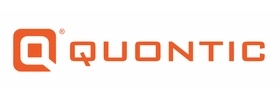Main Differences Between Checking and Savings Accounts

Our evaluations and opinions are not influenced by our advertising relationships, but we may earn a commission from our partners’ links. This content is created by TIME Stamped, under TIME’s direction and produced in accordance with TIME’s editorial guidelines and overseen by TIME’s editorial staff. Learn more about it.
When shopping around for a new bank account, there are two general categories to choose from: checking and savings. Here’s a look at the key features of both, what to consider when shopping around, and how to find the right account for you.
Checking accounts are transactional bank accounts, meaning they are intended for everyday deposits and withdrawals. This is the account most people choose to spend from, and where they usually deposit their paycheck. Savings accounts, on the other hand, are depository accounts. This means they are intended for longer-term deposits and holding funds that aren’t going to be used right away.
Checking and savings accounts are typically available through the same financial institution, though some of their uses and characteristics differ. For example, your funds are the most accessible with a checking account, as deposits and withdrawals aren’t restricted as they may be with a savings account. With a savings account there may be deposit minimums, and not all of them come with check-writing privileges or debit cards, the way checking accounts do.
| Checking | Savings | |
|---|---|---|
Goal | Everyday spending | Funds earmarked for the future |
APY (national average as of Sept. 18, 2023) | 0.07% if offered at all | 0.45% APY |
Fees | May range from $0 to $25 per month but can often be waived by meeting certain requirements | Typically fee free, though some accounts may have a monthly cost |
Access to funds | Debit card, ATM, paper check, cash withdrawal, ACH transfer, wire transfer, money transfer app | ACH transfer, wire transfer, cash withdrawal (checks and debit cards are uncommon) |
Minimum balance | Varies by account, can be as low as $0 | Varies by account, can be as low as $0 |
FDIC insured | In most cases up to $250,000 per depositor, per account title, per financial institution | In most cases up to $250,000 per depositor, per account title, per financial institution |
When it comes to comparing checking accounts with savings accounts, selecting a front-runner really comes down to your goals for the account. If you’re looking to maximize your interest earned, a high-yield savings account (HYSA) is what you need. If you’re looking to pay monthly bills, manage your spending, and enjoy free ATMs around the country, an everyday checking account would be your best bet.
Here are some of the pros and cons of checking and savings accounts.
| Checking | Savings | |
|---|---|---|
APY | Typically very low, if interest is offered at all | Almost always offered; the best HYSAs and many online savings accounts may have rates notably higher than the national average |
Fees | Common, but may be waived if you hold a minimum balance, receive direct deposits each month, maintain other accounts from the same financial institution, or use a connected debit card | Less common; may be waived by meeting certain requirements each month |
Maximum transaction limit | No | Possible |
Debit card and/or paper checks | Yes | Uncommon |
Fee-free ATM network | Typical | Uncommon |
Other possible features/benefits | Credit score trackers, free ATM network, fee reimbursement, budgeting tools, mobile app | Mobile app, credit score and budgeting tools |
The right bank account for you boils down to your personal needs and how you plan to use the account. Here are some situations in which you should choose a checking account over a savings account.
There are plenty of situations when choosing a savings account makes more sense than a checking account. Some examples include:
Everyone will have their own personal requirements and goals; the best checking account for you isn’t necessarily the right one for your sibling, neighbor, or friend. Here are some questions you might ask yourself that can help you choose a checking account.
Many of the same questions apply when choosing a savings account. Here are some additional questions you may want to ask yourself.
Not sure if a standard checking or savings account is right for you and your financial goals? Here are some alternatives to also consider.
Instead of your typical savings account, you can potentially earn more interest by opting for another type of savings vehicle.
If you’re looking for a daily transactional bank account, a standard checking account is usually the best option available. You may want to consider opening a high-yield checking account or rewards checking account if you’re looking to maximize interest on your daily balance or earn rewards for your everyday spending.
These accounts, offered by institutions such as Quontic and Axos, offer above-average interest rates on checking account balances. You may even earn rewards on your everyday spending and activity.
Savings accounts and checking accounts serve two very different purposes and both are necessary for most financial strategies. Finding the right account for you depends on your goals, how you intend to use your money, and which features are the most important on a daily basis.
You should aim to hold enough money in your checking account to cover your monthly bills and expenses, including groceries, gas, and any other regular purchases. It’s wise to keep a little extra in the account as a buffer, in case you need quick access to emergency cash, want to make an unexpected purchase, or have an unplanned debit come out of the account.
In order to open a checking or savings account, the financial institution will request your personal information, such as your name, address, date of birth, email address, and phone number. You may also need to provide your Social Security number and, depending on the financial institution, a credit check may be required. Once approved, you’ll need to fund the account by check, ACH transfer, wire transfer, or with cash at a local branch or retailer.
A high-yield savings account (HYSA) will typically earn you the highest interest rate available. These accounts, usually offered by online banks and financial institutions, have rates that are five to 10 times higher than the national average, and sometimes even more.
The interest rate on checking and savings accounts is generally fixed, though it is subject to change over time and with market rate adjustments. When rates change, customers typically receive a notification by email, snail mail, or as an alert through their bank’s online platform or mobile app.
If your bank offers Federal Deposit Insurance Corporation (FDIC) or National Credit Union Administration (NCUA) insurance coverage, your deposits are protected if the bank fails. This deposit coverage is limited to $250,000 per depositor, per bank, per account title. It does not protect your deposits against fraudulent purchases, theft, or investment losses.
Holding a checking and savings account at the same bank can be beneficial if you need to transfer funds between accounts, want to see all of your balances in one place, or have an existing relationship with a financial institution. You may also qualify for reduced fees, higher interest rates, and more by holding multiple accounts with the same bank. On the other hand, keeping your accounts at separate banks can allow you to access higher interest rates and keep your money out of sight (so you don’t overspend).
Regulation D previously limited depository accounts, such as savings accounts, to no more than six withdrawals per statement cycle. If customers exceeded this limit, they risked their account being closed, converted to another product, or charged penalties. This limit did not apply to transactional products (such as checking accounts). However, Regulation D was amended in 2020 as a result of the COVID-19 pandemic, and banks are no longer required to adhere to the six-transaction rule.
Some banks do still impose this rule (or other withdrawal limits) on savings account and money market account products, but it is no longer a federal dictate.
The information presented here is created by TIME Stamped and overseen by TIME editorial staff. To learn more, see our About Us page.




